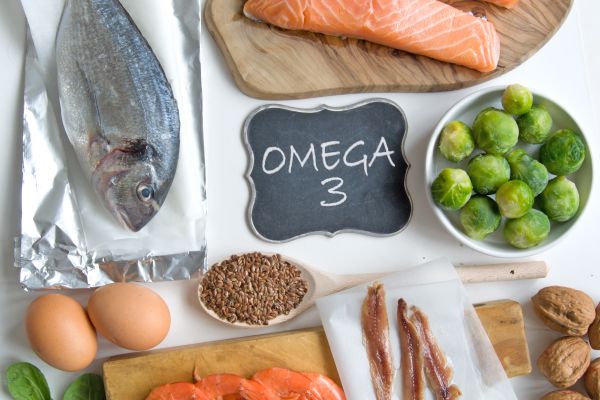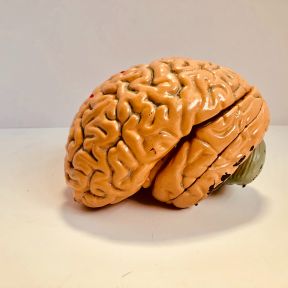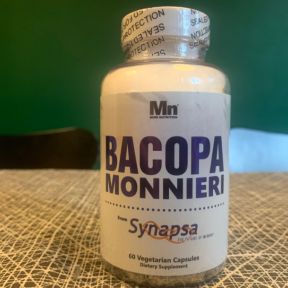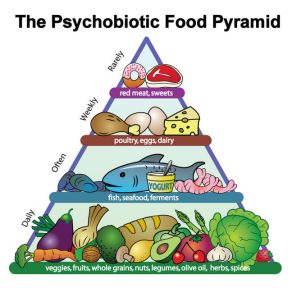Omega-3 is a group of long-chain polyunsaturated fatty acids, most notably found in cold-water fish. Known as an essential fatty acid, omega plays a key role in everything from the immune response to brain function and metabolism, but it must be obtained from food sources, because the body does not naturally create it. Omegas exist in nature in three forms, one derived from land plants and two derived from marine sources.

Omega-3 is highly concentrated in the brain; it is critical to the formation and maintenance of nerve cell membranes. Research shows that in the nervous system, omega-3s foster the development of brain circuitry and the speedy processing of information. Fatty acids play an important role in stabilizing mood and staving off cognitive decline. Low levels of omega-3s are linked to poor memory and even depression. Here's a look at the brain benefits:
- Builds nerve cell membranes maintain the fluidity of nerve cell membranes
- Allows activation of receptor systems, including the visual receptor system
- Makes many bioactive compounds like the anti-inflammatory resolvins and other neuroprotectants
- Supports energy metabolism
- Modulates sodium, potassium, and calcium channels, affecting cell excitability in brain and heart
- Modulates apoptosis, or programmed cell death
- Provides vascular protection against stroke and dementia.
And the body benefits:
- Lower blood triglyceride
- Reduce blood pressure
- Maintain heart function
- Regulate blood pressure
- Counter Inflammation
- Diminish back and joint pain
- Protect mood
- Preserve memory
Omega-3 fatty acids give membranes fluidity and elasticity, allowing brain cells to easily pass neurotransmitters, hormones, and proteins back and forth. The human brain is approximately 66 percent fat, and about 20 percent of that fat is omega-3. Cells can turn omega-3 fatty acids into powerful anti-inflammatory molecules, allowing the brain to heal from trauma, infection, and oxidation or metabolic damage.
The omega-3 family encompasses numerous fatty acids, but three primary forms are eicosapentaenoic acid, EPA, docosahexaenoic acid, DHA, and alpha-linolenic acid, ALA. It's important to get omega-3s from food, those found in plants as well as those found in fatty fish and algae.
Yes. In research on substance use, when subjects were given more than 2 grams of EPA per day, they showed a statistically significant reduction in anxiety compared with those only receiving a placebo.
In studies with individuals who did not suffer depression or anxiety, increased intake of EPA improved their ability to handle stress and generated significant improvements in mood.
Low doses of a common SSRI combined with a combination of omega-3 fatty acids might prove useful in treating patients whose depression has been resistant to conventional treatments.
Critical for anti-inflammation in the body, omega-3 fats protect against pain and disorders like arthritis and joint problems. In some studies, people with rheumatoid arthritis who took omega-3 supplements suffered less joint pain.

The human body is inefficient at making these fatty acids. Therefore, everyone needs to consume these fats regularly. The recommended daily intake for adults is 1.6 grams for males and 1.1 grams for females, according to the National Institutes of Health.
Specific foods contain EPA and DHA, eicosapentaenoic acid, EPA, docosahexaenoic acid, DHA, these are found primarily in fish. Coldwater and fatty fish are higher in omega-3s, but here is a shortlist.
- Salmon
- Mackerel
- Sardines
- Tuna
- Anchovies
- Herring
- Trout
- Seaweed
And specific foods contain alpha-linolenic acid, ALA. Plant foods like nuts and seeds are high in ALA, but some vegetables also contain it.
- Flaxseed
- Chia
- Walnuts
- Cashews
- Soy foods
- Pumpkin seeds
- Canola
- Brussel sprouts
- Spinach
- Broccoli
- Basil
Plant foods do not contain EPA or DHA. The only omega-3 found in plant foods is ALA, which is difficult for the human body to transform into EPA and DHA. Most studies estimate that less than 10 percent of ALA, and in some cases as little as 0 percent, is converted into EPA and DHA in the human body.
No, eggs are very low in EPA and DHA. Eggs that are marketed as being higher in omega-3 are actually higher in ALA. Remember that this form of omega-3 is very difficult for the human body to use.
Most seafoods contain at least some EPA and DHA; shellfish and lean white fish are lower in omega-3s because they are lower in fat, in general. But mackerel and salmon are high in these fatty acids; a six-ounce serving of wild salmon contains some 900 mg of EPA and over 1100 mg of DHA.
Farmed and wild fish have about the same amount of omega-3s. However, farmed fish is often higher in omega-6s because of what these fish are fed, and omega-6s work against omega-3s in the human body.
The more omega-6 you eat, the more omega-3 you must eat, this balance of essential fats will help keep inflammation at bay. The recommended intake of omega-3s may even be inflated because studies are conducted on people who likely consume higher levels of omega-6; the Western diet is typically high in omega-6.
Vegetable oils and nuts and seeds contain omega-6 fatty acids, unsaturated fats. While omega-6s are a good replacement for meats and dairy, a diet in excess of these fats isn’t healthy.
In a 2005 study, compared to meat-eaters, vegetarians were 28 percent lower in EPA and 31 percent lower in DHA. Meanwhile, vegans were 53 percent lower in EPA and 59 percent lower in DHA compared with meat-eaters.















